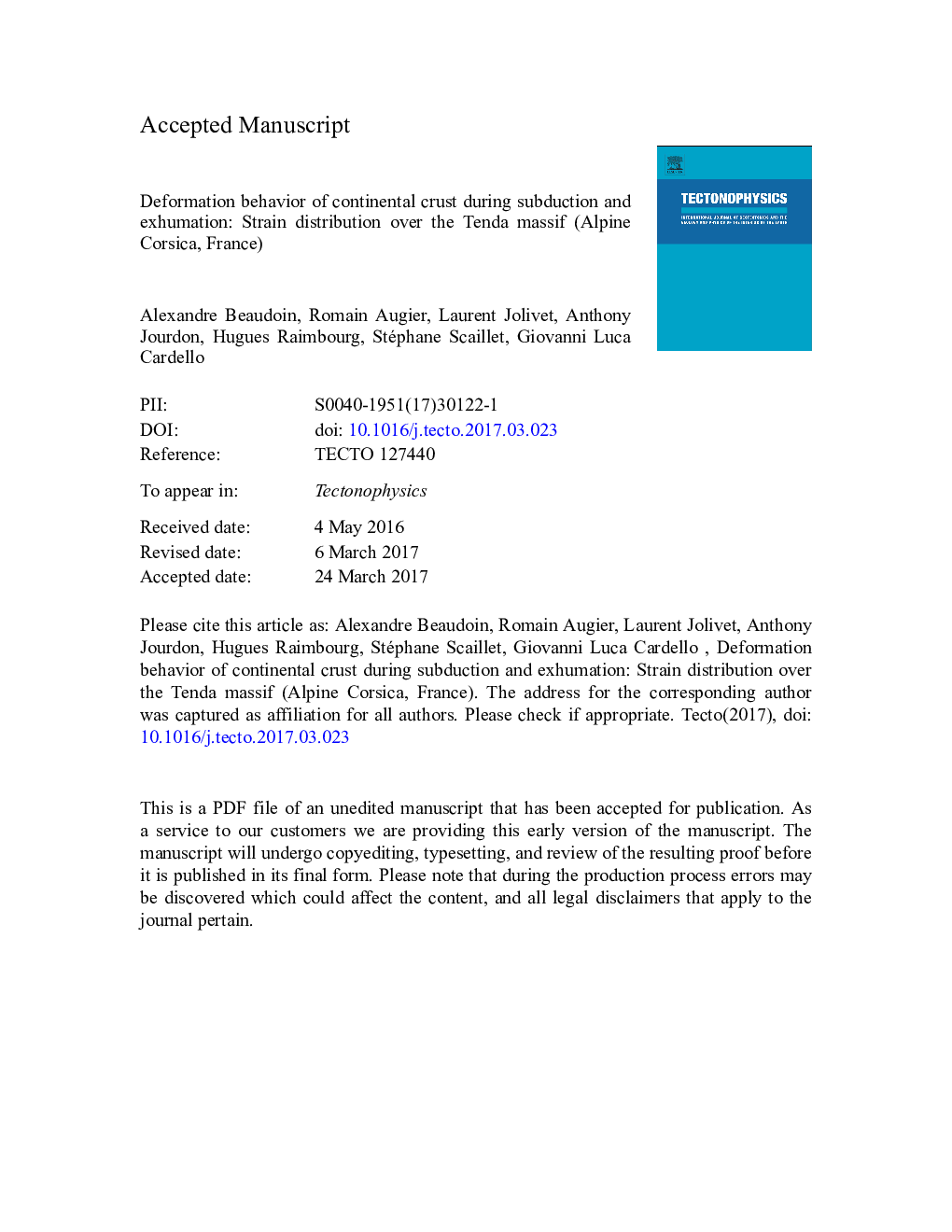| Article ID | Journal | Published Year | Pages | File Type |
|---|---|---|---|---|
| 5781625 | Tectonophysics | 2017 | 72 Pages |
Abstract
In order to address the question of strain localization within continental units during subduction and exhumation, a large-scale portion of an exhumed continental crust was structurally revisited. The Tenda massif (Alpine Corsica) has recorded burial (D1; top-to-the-SW kinematics) down to blueschist-facies conditions followed by exhumation (D2; top-to-the-NE kinematics). It was so far regarded as a quite rigid unit with strain localization at the upper contact with the overlying oceanic material, the East Tenda Shear Zone (ETSZ), where previous studies were focused. A structural analysis carried out from the core to the boundaries of this continental unit shows instead that deformation is pervasive in the whole section. A reappraisal of the finite structure shows that this unit corresponds to a N140°E elongated dome of D2 fabrics severely overprinting earlier D1 structures, locally preserved in the core of the dome. Field observations show that deformation was distributed at maximum burial, pervasively affecting both the Tenda massif and the overlying tectonically coupled oceanic material. Strain remained distributed during the first steps of exhumation that probably started during the last stages of subduction. After a regional switch from compression to extension, deformation localized toward the ETSZ and other internal shear zones such as the newly described Saleccia Shear Zone, as shown by strain intensity mapping in the eastern granitic protoliths. Doming occurred during this localization when crossing the brittle-ductile transition. This large-scale structural study shows that lithological boundaries controlled the place where strain localized, while the general style of deformation (distributed vs localized) was controlled by depth (i.e. pressure-temperature conditions), interacting with other parameters such as fluid circulation and protolith composition.
Related Topics
Physical Sciences and Engineering
Earth and Planetary Sciences
Earth-Surface Processes
Authors
Alexandre Beaudoin, Romain Augier, Laurent Jolivet, Anthony Jourdon, Hugues Raimbourg, Stéphane Scaillet, Giovanni Luca Cardello,
